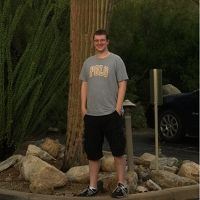Redfield et al., 2015
Concentration-Discharge Relationships of Al, Transition Metals, and Rare Earth Elements in the Santa Catalina Mountains- Jemez River Basin Critical Zone Observatory
Redfield S., Chorover J, Trostle K. (2015)
Abstract H21C-1379 presented at 2015 Fall Meeting, AGU, San Francisco, CA, 14-18 Dec.
-
Catalina-Jemez, INVESTIGATOR
-
Catalina-Jemez, INVESTIGATOR
Abstract
The Concentration-Discharge relationships of solutes in stream waters during high-volume storm events are of interest when studying influencing factors of weathering. While base cations (Na, K, Mg, Ca) have been widely characterized in terms of concentration-discharge relationships, little is known in regards to Al, transition metals, and rare earth elements, which typically demonstrate a positive concentration-discharge relationship, unlike their cation counterparts. We performed a cascade-filtration (at 1.2μm, 0.4μm, and 0.025μm) of stream water samples collected during a monsoon storm event at the Marshall Gulch site of the Santa Catalina Mountains-Jemez River Basin Critical Zone Observatory and used standard stream water analytical techniques to determine concentration-discharge relationships. This yielded positive concentration-discharge relationships for Al, transition metals, and rare earth elements. Additionally, using the ratio of 0.025μm-filtered samples to 0.4μm-filtered samples, we find that these species (Al, transition metals, rare earth elements) were not completely dissolved in stream water. This partial dissolution, in conjunction with the positive concentration-discharge relationship, implies the complexation of these species to colloids or dissolved organic matter during stream-water transport.
Citation
Redfield S., Chorover J, Trostle K. (2015): Concentration-Discharge Relationships of Al, Transition Metals, and Rare Earth Elements in the Santa Catalina Mountains- Jemez River Basin Critical Zone Observatory. Abstract H21C-1379 presented at 2015 Fall Meeting, AGU, San Francisco, CA, 14-18 Dec..
 This Paper/Book acknowledges NSF CZO grant support.
This Paper/Book acknowledges NSF CZO grant support.
Explore Further


